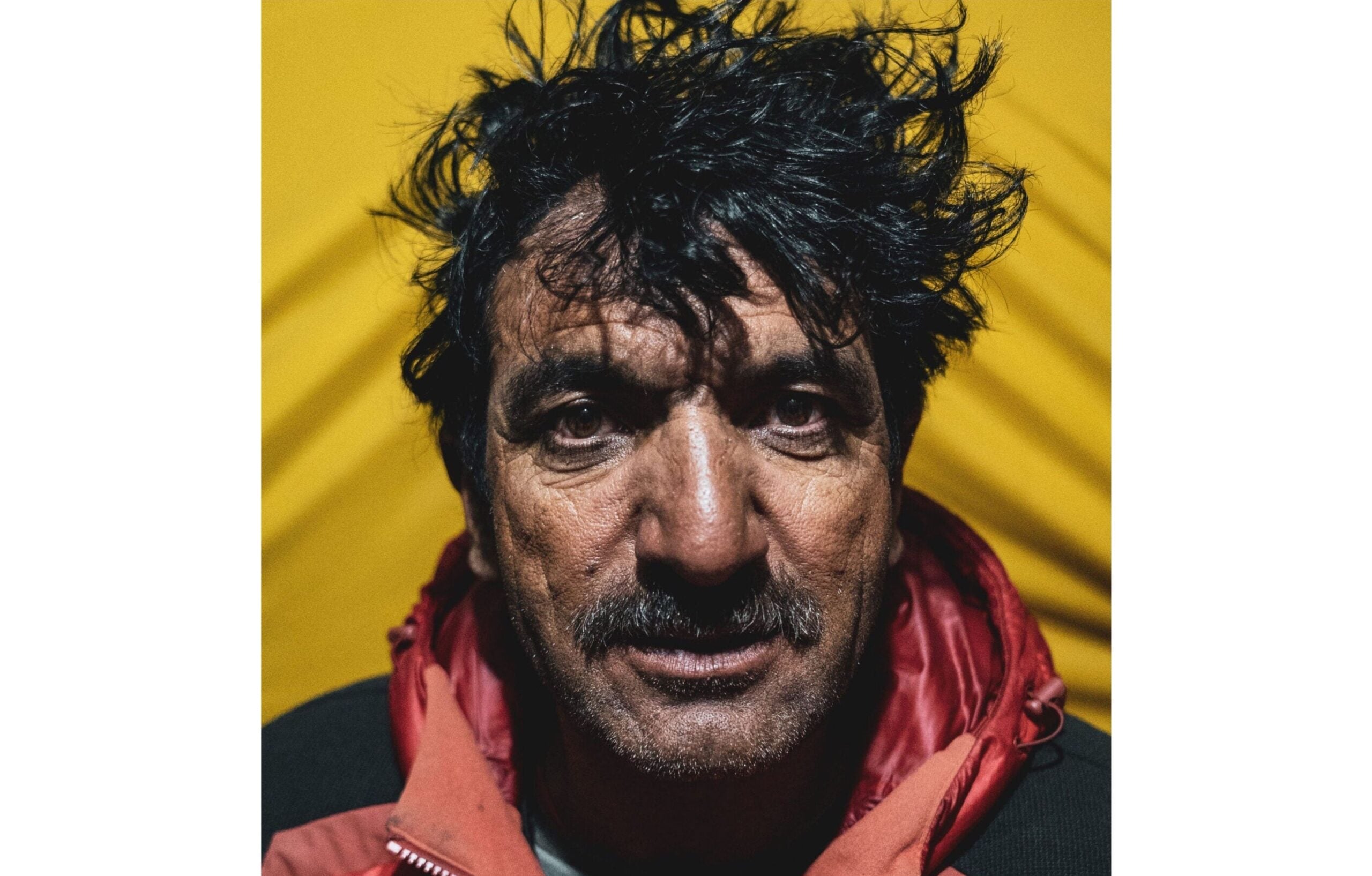A Climber We Lost: Muhammad Ali Sadpara, February 5

(Photo: Elia Saikaly)
You can read the full tribute to Climbers We Lost in 2021 here.
Muhammad Ali Sadpara, 45, February 5
Even after learning that Nirmal “Nims” Purja, Mingma G, and eight other Nepali climbers had completed the coveted first winter ascent of K2, last January, Muhammad Ali Sadpara, of Pakistan, remained motivated for the feat.
“For him, K2 in winter was very ambitious, but he wanted to show that he could climb it,” the Italian climber Simone Moro told Climbing. “He understood that he could be an icon for the Pakistani mountaineering community.”
Ali, 45, never made it back from K2, undertaken with his then 21-year-old son, Sajid Ali Sadpara, who retreated before the summit attempt when his oxygen regulator malfunctioned; John Snorri Sigurjónsson, an Icelandic climber; and a Chilean climber, Juan Pablo “JP” Mohr Prieto. Ali, Snorri, and Mohr all disappeared high on K2, near the Bottleneck. Their last contact was on February 5. Their bodies were found in late July.Muhammad Ali had grown up in Sadpara, a village near Skardu, Pakistan, and as a youth started working as a porter for international climbing expeditions in the 1990s. He rose up through the guiding ranks to become a high-altitude porter and climber, and his country’s most respected mountaineer.
Ali is remembered as a beloved expedition member many times over. “What defined Ali Sadpara was his one-of-a-kind spirit,” Elia Saikaly, an alpinist and documentary filmmaker on the winter K2 expedition, told Climbing in an email. “You can learn a lot about a man by observing the way others interact with him. Ali was loved by all. He had a contagious positive attitude and an uncanny sense of humor .. [with the] ability to shift the energy of a room (or tent) moments after walking into it. He was also one heck of a talented dancer!”
Ali’s legacy, Saikaly believes, is as a role model for balancing life as “an incredibly strong and accomplished climber and family man,” with a deep humanity.
Ali lived in Skardu. He married his wife, Fatima, when he was 19 years old. When he started portering, he would cross the Baltoro glacier wearing just flip-flops, according to a 2018 profile in Alpinist magazine.
“He had the physique and the habits of an athlete, and was also good in studies. He never failed a class. Since his elder brother never did well in school, his father was keen to get him a good education and that’s why he moved him to Skardu,” Nisar Abas, a journalist and childhood friend of Ali’s, told BBC News in February following Ali’s disappearance.

Ali climbed eight of the world’s 14 8,000-meter peaks: Gasherbrum II (8,035 meters), Nanga Parbat (8,126 meters), Gasherbrum I (8,080 meters), Broad Peak (8,047 meters), K2 (8,611 meters), Lhotse (8,516 meters), Makalu (8,485 meters), and Manaslu (8,163 meters).
As he climbed more peaks, his exceptional ability to perform in the toughest conditions attracted notice from some of the best high-altitude climbers.For his first 8,000er summit, Gasherbrum II, in 2006, Ali cobbled together his kit. “I didn’t have the right boots, didn’t have a down jacket, let alone a down suit to protect me from the harsh cold,” he told the Pakistani newspaper Dawn. “I had some second-hand climbing gear which I bought from the market in Skardu and repaired. But I still managed to climb and come back safely.”
In the winter of 2015, Ali joined the Basque climber Alex Txikon and the Italian climber Daniele Nardi in attempting the first winter ascent of Nanga Parbat; Nardi was to die on Nanga Parbat in 2019. The next year, Ali and Txikon joined forces with Simone Moro and another Italian climber, Tamara Lunger. After Lunger turned back near the summit, the other three made the monumental first winter ascent of Nanga Parbat, on February 26, 2016.
At the time, except for K2, it was the only 8,000er still unclimbed in winter.
Simone Moro told Alpinist, “Ali is to Nanga Parbat what Tenzing was to Everest.”
Still, Ali struggled to land financial backers to pursue further expeditions.
Abbas Ali, a close friend and fellow climber from Pakistan, told Climbing, “He never could get good sponsors—if he could have had sponsors, he could have done all the 8,000ers multiple times.”
Ali re-teamed with Txikon again in 2018 for a winter ascent of Everest, but the expedition came up short.
Regarding the lack of sponsorship, well-deserved as it was, “He doesn’t question why, not out loud,” wrote Amanda Padoan in Alpinist. “Back in Sadpara, he says he has too much to occupy him: wheat to thresh, potatoes to dig, cattle to feed, walls to mend, roofs to patch and children to educate.
“This other life is good, he says: it reminds him of who he’s supposed to be.When asked about his dreams, though, she writes, he says he wants a winter ascent of K2.
Ali is survived by his wife, Fatima, three sons, and a daughter.
You can read the full tribute to Climbers We Lost in 2021 here.